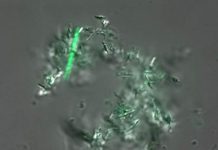BOSTON, Aug. 19 (Brooks Hays) — After decades of complaints, scientists have finally decided to solve the problem of the watery, flavorless mass-market tomatoes found in grocery stores.
As most cooks know, the only way to procure a consistently tasty tomato is to pick it from a backyard garden or buy it from a farm stand. But consumers want tomatoes 365 days a year, which means the ruby red fruit must be stored for several days and sometimes shipped thousands of miles across the country.
To get tomatoes on the shelves of stores in Northern Michigan in the middle of February, growers in California, Florida, Mexico and elsewhere pick the fruit before its ripe and then blast it with ethylene to trigger ripening. The ripening fruit is then shipped and stored at very low temperatures until it reaches its point of sale.
This process degrades flavor, researchers explained on Wednesday at the American Chemical Society 250th National Meeting & Exposition, held this week in Boston.
“To produce a better tasting tomato, we added a hot water pre-treatment step to the usual protocol that growers follow,” Jinhe Bai, a plant physiologist with the USDA and researcher at the U. S. Horticultural Research Laboratory, said in a press release. “We found that this pre-treatment step prevents flavor loss due to chilling.”
Bai teamed up with researchers at the University of Florida to test their process. First, green tomatoes are picked, sprayed and dipped in hot water for five minutes, soaking at a temperature of approximately 125 degrees Fahrenheit. Next, the tomatoes are chilled to a temperature between 41 and 55 degrees Fahrenheit.
The process produced tomatoes that, once ripe, boasted higher concentrations of flavor compounds, including 6-methyl-5-hepten-2-one, 2-methylbutanal and 2-phenylethanol.
“Chilling suppresses production of oxygen, nitrogen and sulfur-containing heterocyclic compounds, ketones, alcohols and aldehydes, including 13 important aroma components of tomato flavor,” Bai explained. “But hot water-treated fruit actually produced higher concentrations of these important aroma contributors, even with subsequent chilling.”
Researchers say the process could be easily implemented by current commercial producers and processors — without new technology and without sacrificing food safety or protection against spoilage.
Bai and his colleagues also tested another promising technique, whereby tomatoes are picked when they are slightly riper (half-green, half-pink) and then sprayed with an EPA-approved gas called 1-methylcyclopropene.
These tomatoes also showed higher concentration of important flavor and aroma compounds. Researchers are hoping to compare and contrast the flavors preserved by these two methods.






